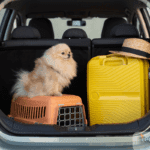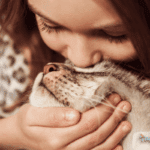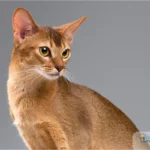The Ragdoll Cat Breed
Ragdoll cats are known for their captivating blue eyes, silky coats, and unique “floppy” nature when held. These affectionate companions thrive on love and attention, forming strong bonds with their human families. Their calm demeanor and adaptability make them ideal for families, singles, and multi-pet households alike.
If you’re looking for a loyal, easygoing feline with a playful side, the Ragdoll cat may be the perfect choice.
This guide will dive into everything you need to know about owning a Ragdoll cat, from their origins and care requirements to costs and frequently asked questions. Whether you’re curious about their health, grooming, or what sets them apart from other breeds, we’ve got you covered.
Quick Facts: Meet the Ragdoll Cat
Here’s a quick overview of key Ragdoll characteristics to get to know them better:
| Characteristic | Description | Rating |
| Size | Males: 15–20 lbs (6.8–9.1 kg), Females: 10–15 lbs (4.5–6.8 kg) | ⭐⭐⭐⭐ |
| Average Lifespan | 12–15 years | ⭐⭐⭐⭐ |
| Intelligence Ranking | Top 10 smartest | ⭐⭐⭐⭐⭐ |
| Exercise Requirements | Moderate | ⭐⭐⭐ |
| Grooming Needs | Twice-weekly brushing | ⭐⭐⭐⭐ |
| Training Adaptability | Highly trainable | ⭐⭐⭐⭐⭐ |
| Compatibility with Children | Excellent | ⭐⭐⭐⭐⭐ |
| Energy Level | Moderate | ⭐⭐⭐ |
| Shedding Level | Low to moderate | ⭐⭐⭐ |
| Apartment Living | Highly suitable | ⭐⭐⭐⭐⭐ |
| Health Issues | Breed-specific (e.g., HCM, urinary issues) | ⭐⭐⭐ |
| Cost of Ownership | High initial cost | ⭐⭐⭐⭐ |
| Vocal Tendency | Soft and infrequent | ⭐⭐⭐⭐ |
| Social Needs | High | ⭐⭐⭐⭐⭐ |
- • Adaptable and calm: thrives in both spacious houses and cozy apartments
- • Gentle and affectionate: known for their loving temperament and docile nature
- • Perfect for first-time owners: easygoing personality with manageable grooming needs
- • Devoted companions: forms deep bonds and follows family members like shadows
Key Traits of Ragdoll Cats
- Affectionate and Loyal: Ragdolls are known for their strong attachment to their families, often seeking attention and enjoying cuddles. Their calm demeanor makes them excellent companions for children and other pets.
- Easygoing and Adaptable: Whether living in a cozy apartment or a spacious home, Ragdolls thrive in various environments as long as they receive plenty of attention and affection.
- Playful and Engaging: Though calm, Ragdolls enjoy interactive play and benefit from toys, climbing structures, and daily stimulation to stay mentally and physically healthy.
- Minimal Grooming Needs: Despite their long, silky coats, Ragdolls require only moderate grooming, such as weekly brushing, to keep their fur free of tangles and reduce shedding.
Ragdolls are an easygoing breed, but they still require consistent care to thrive. Regular playtime, a balanced diet, and routine veterinary check-ups are essential for their overall well-being. Investing in interactive toys and cat trees will help keep their curious minds engaged while providing physical exercise.
For readers exploring different cat breeds, check out our Complete Guide to Choosing the Perfect Cat Breed for comparisons and insights into other popular feline companions.
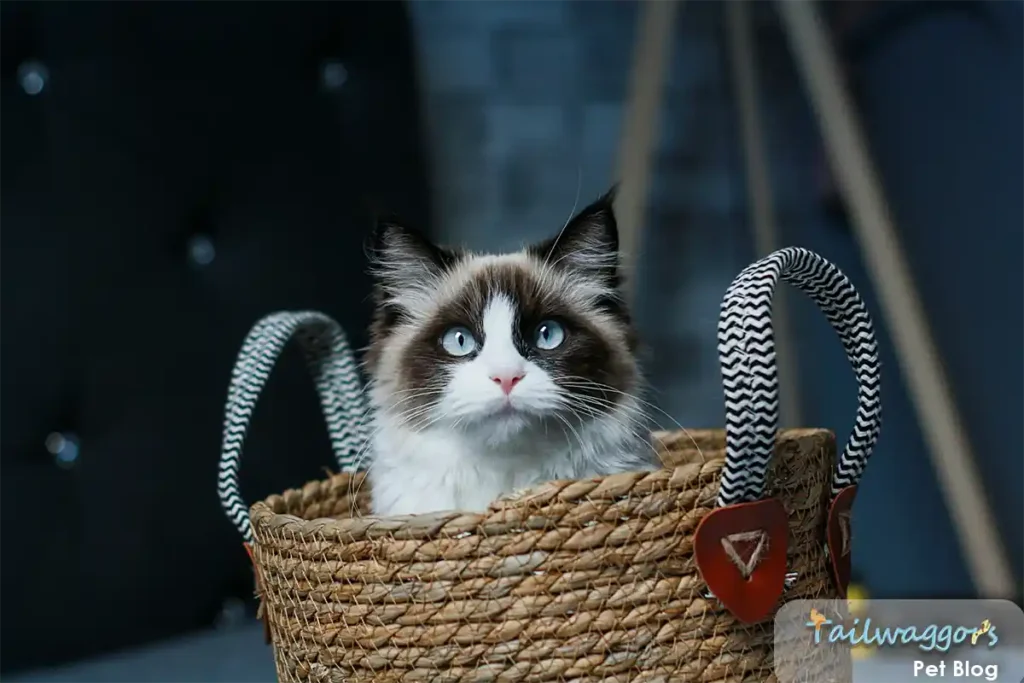
History and Origins of the Ragdoll Cat
Quick Facts About Ragdoll Origins
| Aspect | Detail |
| Genetic Heritage | Descended from a Persian-Angora mix named Josephine |
| Size Profile | Males: 15–20 lbs (6.8–9.1 kg), Females: 10–15 lbs (4.5–6.8 kg) |
| First Documentation | 1960s, Riverside, California |
| Geographic Connection | Linked to suburban environments and family settings |
Understanding the history of Ragdoll cats reveals their relatively recent development and the remarkable vision behind their creation. These cats are a perfect example of how intentional breeding can shape a breed’s traits and temperament. If you’re curious about how various cat breeds have evolved, check out our Complete Guide to Choosing the Perfect Cat Breed for more insights.
The Fascinating Origins of the Ragdoll
The Ragdoll is a relatively modern breed with a story as unique as its personality. Known for their striking blue eyes, luxurious semi-long coats, and affectionate nature, Ragdolls owe their existence to the vision of one dedicated breeder and a very special cat named Josephine.
The Early Years: Josephine and Ann Baker
The story of the Ragdoll begins in the 1960s in Riverside, California. A Persian-Angora mix named Josephine caught the attention of Ann Baker, a local breeder. Josephine’s kittens displayed an extraordinary calm and affectionate temperament, combined with stunning physical features. Recognizing the potential to develop a breed embodying these unique qualities, Ann began a selective breeding program.
Ann trademarked the Ragdoll breed to preserve its hallmark traits, such as its “floppy” behavior when held, affectionate nature, and striking appearance. Her goal was to create a cat that was not only beautiful but also docile, adaptable, and ideal for families.
🐱 Fun Facts About Ragdoll Origins
- Trademarked Breed: Ann Baker trademarked the Ragdoll breed in its early years to ensure consistency in traits and appearance.
- Gentle Giants: Ragdolls are one of the largest domestic cat breeds, with males often reaching up to 20 pounds (9.1 kg).
- Floppy Behavior: Their name comes from their tendency to go limp when picked up, a trait that makes them uniquely endearing.
Rise to Popularity
By the 1970s, Ragdolls began gaining recognition as a formal breed. Ann Baker’s efforts to trademark and promote the breed drew attention to their unique temperament and captivating appearance. Despite initial skepticism, Ragdolls quickly found a dedicated following among cat enthusiasts who admired their affectionate, laid-back nature.
In the decades that followed, breeders refined and expanded the Ragdoll gene pool while maintaining its original traits. Reputable organizations such as the Cat Fanciers’ Association (CFA) and The International Cat Association (TICA) formally recognized the breed, solidifying its place as a favorite among cat lovers worldwide.
Modern-Day Ragdolls: Beloved Worldwide
Today, Ragdolls are one of the most sought-after cat breeds in the world. Their loving nature, striking appearance, and compatibility with families, singles, and multi-pet households make them a popular choice for pet owners. They are frequently showcased at cat shows and adored by a loyal fan base who appreciate their calm demeanor and affectionate personality.
Whether you’re drawn to their stunning looks or gentle, family-friendly temperament, Ragdolls are a testament to the extraordinary possibilities of intentional breeding. Their unique combination of traits continues to make them a standout choice for cat lovers around the globe.
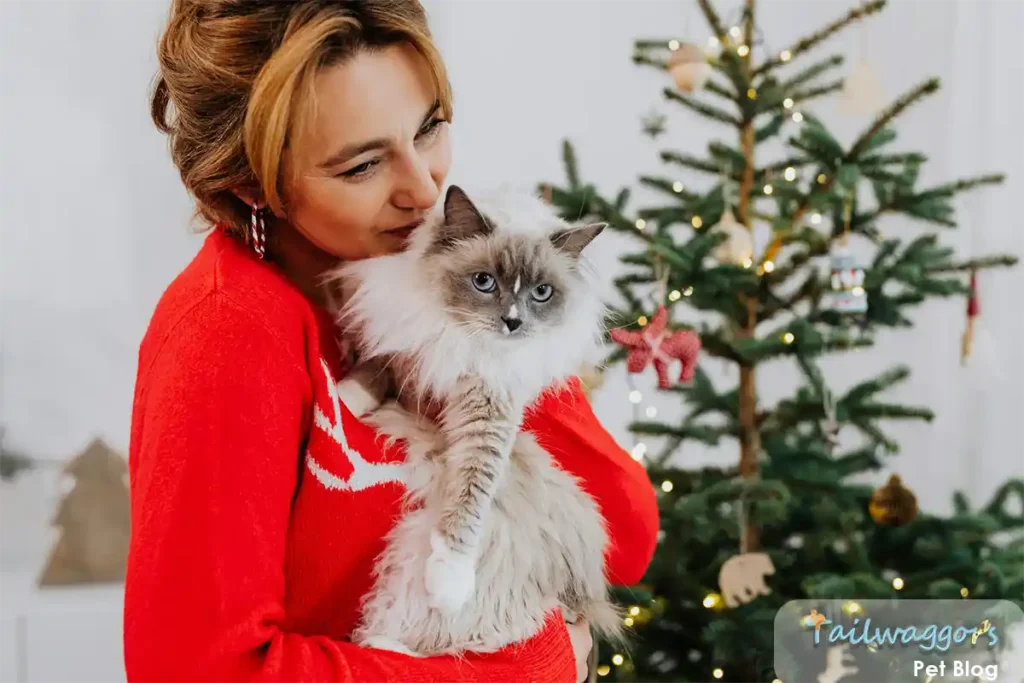
Personality Traits of the Ragdoll Cat
Ragdolls are celebrated for their calm, affectionate, and endearingly “floppy” nature when held. These personality traits make them one of the most beloved cat breeds, particularly for those seeking a gentle and loyal companion. Let’s explore the key characteristics that define the Ragdoll and how these traits shape their interactions with families and other pets.
Table: Temperament & Behavior Profile
| Behavioral Trait | Characteristic | Training Need | Adaptability Rating |
| Social Interaction | Highly social | Low | ⭐⭐⭐⭐⭐ |
| Activity Level | Moderate | Moderate | ⭐⭐⭐⭐ |
| Problem Solving | Excellent | Low | ⭐⭐⭐⭐⭐ |
| Attention Seeking | High | Low | ⭐⭐⭐⭐⭐ |
| Independence | Low | Moderate | ⭐⭐⭐⭐ |
Loving and Loyal Companions
Ragdolls are renowned for their affectionate and loyal nature, forming deep bonds with their human families. Unlike many independent cat breeds, Ragdolls prefer to stay close to their owners and are often described as the ultimate “lap cats.” They’ll happily follow you from room to room, seeking affection and companionship.
Real-Life Example: Many Ragdoll owners share stories of their cats curling up on their laps during movie nights, snuggling in bed, or lying nearby as they work. Their puppy-like loyalty makes Ragdolls the ideal companion for families or individuals looking for a low-maintenance, affectionate pet.
Ragdolls’ devotion to their humans is unparalleled. They thrive in loving environments where their need for attention is met, making them an excellent choice for families,” says Dr. Esther Knoetze, BSc, BVSc.
While Ragdolls enjoy attention, they are not overly demanding. Their balanced nature makes them a perfect choice for pet owners who want a loving cat that also knows how to relax quietly.
Intelligent and Highly Trainable
Ragdolls are exceptionally intelligent and highly trainable, making them a perfect addition to families with children or multi-pet households. Their eagerness to please, coupled with their calm demeanor, allows for enjoyable and productive training sessions.
Training Tip: Positive reinforcement is key. Use treats or gentle praise to teach Ragdolls simple commands like “sit” or “come.” Gradually introduce more engaging activities such as playing fetch or walking on a leash. These activities keep their minds sharp and strengthen the bond with their owners.
Ragdolls are curious problem solvers and often figure out how to open doors or access hidden treats. While their intelligence is endearing, cat-proofing your home is crucial to prevent mischievous behavior.
Engaging Ragdolls with interactive play and training not only enriches their lives but also enhances the owner-pet relationship,” explains Dr. Knoetze, BSc, BVSc.
Playful and Engaging
While Ragdolls are known for their laid-back demeanor, they enjoy bursts of playfulness and thrive on interactive activities. Toys such as feather wands, laser pointers, and puzzle feeders challenge their minds and keep them entertained. Their moderate energy level ensures they enthusiastically engage in play but are just as content to nap beside you afterward.
Real-Life Example: Many Ragdoll owners report their cats delighting in games like chasing laser pointers or swatting at feather toys. Some Ragdolls even display a fascination with water, happily dipping their paws into fountains or water bowls.
🐾 Tailwaggors Tip:
Incorporate a variety of toys to keep your Ragdoll mentally stimulated and physically active. Consider adding a small water fountain to indulge their curiosity safely.
Gentle and Social with Others
Ragdolls are famously gentle and social, making them excellent companions for families and multi-pet households. Their tolerance for handling and calm demeanor mean they rarely act aggressively or feel threatened, even in busy environments.
Real-Life Example: Ragdolls are often seen lounging peacefully alongside dogs or other cats. Their relaxed personality allows them to integrate seamlessly into households with existing pets. They also tolerate enthusiastic play from children, making them a favorite among young families.
Ragdolls’ gentle temperament makes them a top choice for homes with children or multiple pets,” notes Dr. Knoetze, BSc, BVSc. “Proper introductions ensure they adapt smoothly to new environments.”
Soft-Spoken Communicators
Unlike more vocal breeds, Ragdolls are known for their soft, sweet meows and gentle purrs. They communicate subtly, often using chirps or quiet trills to greet their owners or express excitement.
🐱 Fun Fact: Ragdolls frequently “respond” to their owners’ voices, creating a uniquely interactive and engaging relationship.
This low to moderate vocalization makes Ragdolls an excellent choice for quieter homes, as they won’t disturb the peace with excessive noise.
🐾 Tailwaggors Tip:
Engage in “conversations” with your Ragdoll by speaking softly; many owners report that their cats respond with chirps or meows, enhancing the bond.
Understanding Ragdoll Personalities
Ragdolls combine intelligence, affection, and a calm demeanor, making them a joy to have as part of any family. Whether you’re a first-time cat owner or a lifelong feline enthusiast, their lovable traits, gentle nature, and adaptability ensure they’ll quickly become a cherished member of your household.
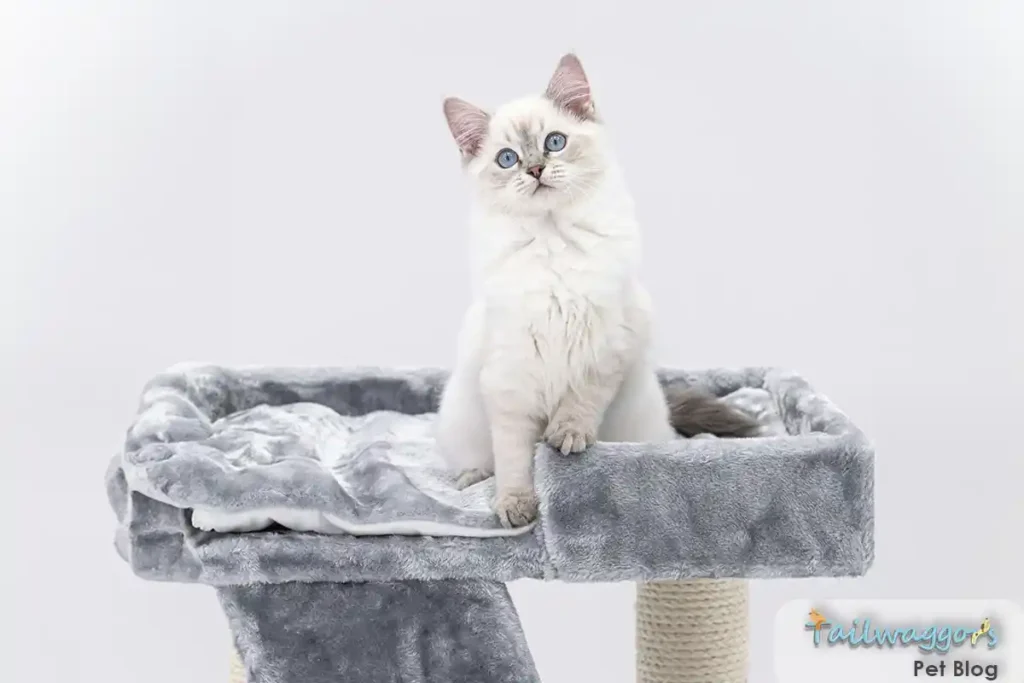
Physical Characteristics of the Ragdoll Cat
Ragdolls are celebrated for their majestic appearance and serene temperament. From their striking size to their luxurious coats, every feature of a Ragdoll cat is designed to captivate.
Size and Build
The Ragdoll cat, one of the largest domesticated breeds, is celebrated for its muscular yet graceful build and its calm, affectionate nature. These majestic cats are known for their gentle demeanor and easy adaptability.
- Average Size:
- Males: 15–20 pounds (6.8–9.1 kg)
- Females: 10–15 pounds (4.5–6.8 kg)
- Notable Features:
- Broad chests, well-muscled hind legs, and a plush, flowing tail.
- Their semi-cobby frame blends strength with elegance, creating a striking silhouette.
🐱 Fun Fact: Ragdolls are famous for their unique behavior of going limp when picked up, a trait that reflects their trust and relaxed nature, making them wonderful lap cats.
Coat and Colors
Ragdolls’ semi-long, silky fur and diverse coat patterns make them one of the most visually captivating breeds. Their luxurious coats are relatively easy to maintain with regular grooming.
Coat Texture:
Soft, silky, and semi-long, Ragdolls’ coats require moderate grooming, making them lower-maintenance than many long-haired breeds.
Common Ragdoll Color Varieties and Specific Care Needs
Seal Point:
- Appearance: Dark brown (seal) points on ears, face, paws, and tail, with a cream or fawn body.
- Care Needs: Brush 1–2 times weekly to maintain sleekness and manage moderate shedding.
Blue Point:
- Appearance: Cool grayish-blue points with a bluish-white body for an elegant look.
- Care Needs: Light weekly brushing. Use a damp cloth to gently clean tear stains around the eyes, common in lighter-colored Ragdolls.
Chocolate Point:
- Appearance: Warm chocolate-brown points against an ivory body, making them rare and highly sought after.
- Care Needs: Brush regularly, especially during seasonal shedding, to enhance the coat’s richness.
Lilac Point:
- Appearance: Pale grayish-pink points with an off-white body, creating a delicate pastel look.
- Care Needs: Extra attention to prevent staining around the face and paws. Gentle grooming tools can help maintain their pristine appearance.
Flame (Red) Point:
- Appearance: Vibrant red or orange points with a creamy white body.
- Care Needs: Weekly brushing to manage noticeable shedding during seasonal changes. A quality de-shedding tool can help reduce fur buildup.
Tortoiseshell (Tortie):
- Appearance: A marbled mix of cream, red, and seal, creating a unique look.
- Care Needs: Brush every 3–4 days to prevent matting, particularly in areas with thicker fur.
Bicolor:
- Appearance: An inverted “V” on the face, with white fur on the chest, legs, and stomach contrasting darker points.
- Care Needs: Regular brushing and spot cleaning to keep their white fur bright and stain-free.
Facial Features
Ragdolls are beloved for their striking blue eyes and serene expressions, which add to their calm and approachable demeanor.
- Eyes: Large, oval-shaped, and an intense sapphire blue that captures their tranquil personality.
- Ears: Medium-sized, slightly rounded, and angled to complement their balanced facial structure.
- Nose: Straight with a subtle dip, harmonizing with their soft, rounded features.
🐱 Fun Fact: The Ragdoll’s piercing blue eyes are a hallmark of the breed, contributing to their angelic and soulful appearance that cat enthusiasts adore.
Why Understanding These Characteristics Matters
Ragdolls’ physical traits, from their majestic size to their luxurious coats and captivating eyes, make them an iconic and cherished breed. By tailoring care to their unique needs, you can ensure they remain healthy and happy in any home environment.
Ready to learn more about Ragdoll care? Visit our Complete Ragdoll Cat Care Guide for expert advice on grooming, diet, and enrichment activities to keep your Ragdoll thriving!
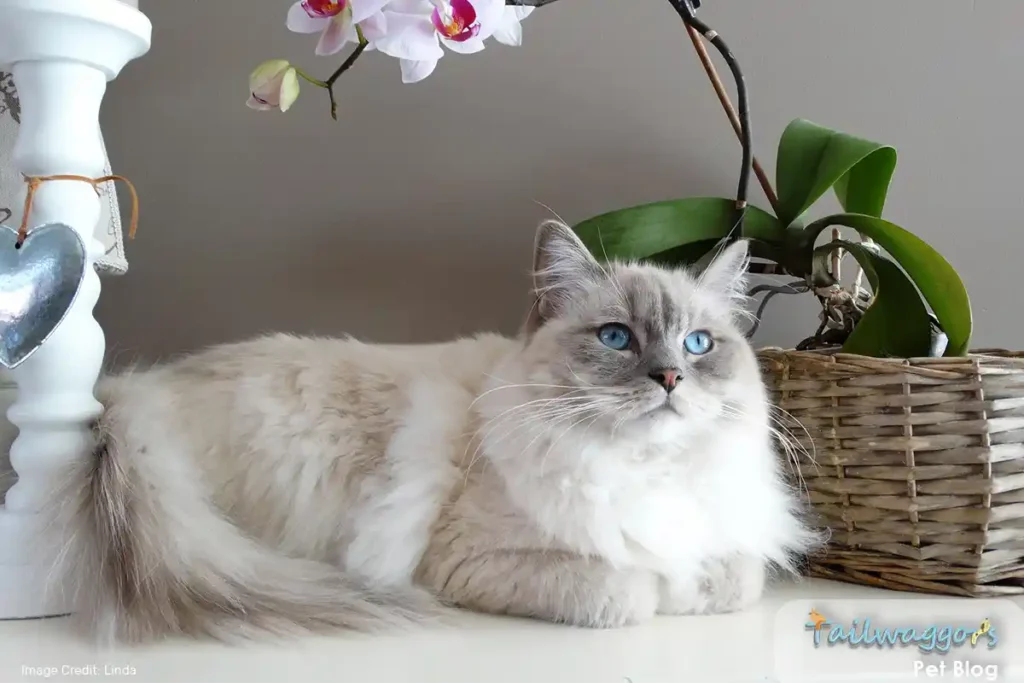
Health and Lifespan of the Ragdoll Cat
Ragdolls are generally robust and healthy cats, but like any breed, they are predisposed to certain genetic and health conditions. Understanding these potential risks and knowing how to manage them is crucial to ensuring your Ragdoll lives a long, happy life.
Average Lifespan of Ragdolls
Ragdolls typically live 12–15 years, with some reaching their late teens or even early twenties when given proper care. Genetics, diet, exercise, and regular veterinary visits all contribute to their longevity.
- Factors Affecting Longevity:
- Regular veterinary checkups to monitor for breed-specific health concerns like Hypertrophic Cardiomyopathy (HCM).
- A high-protein diet to support muscle maintenance and overall health.
- Consistent grooming to prevent matting and ensure skin health.
- A stress-free environment with plenty of enrichment opportunities.
Ragdolls’ calm demeanor and relatively low-maintenance coats contribute to their longevity,” says Dr. Knoetze, BSc, BVSc. “However, proactive healthcare, nutrition and regular grooming play critical roles in their overall well-being.”
Common Health Issues in Ragdolls
Table: Health & Genetic Considerations
| Health Aspect | Risk Level | Prevention Options | Management Rating |
| Hypertrophic Cardiomyopathy (HCM) | Moderate | Genetic testing, regular screenings | ⭐⭐⭐⭐ |
| Urinary Tract Issues | Moderate | Encourage hydration, clean litter box | ⭐⭐⭐⭐ |
| Obesity | High | Portion control, regular exercise | ⭐⭐⭐⭐ |
| Dental Disease | Moderate | Routine brushing, dental treats | ⭐⭐⭐⭐ |
| Hairballs | Moderate | Regular grooming, high-fiber diet | ⭐⭐⭐ |
Hypertrophic Cardiomyopathy (HCM):
- What is it? A genetic heart condition that causes the thickening of the heart muscles, impairing blood flow and potentially leading to heart failure.
- Symptoms: Lethargy, difficulty breathing, fainting, or reduced appetite.
- Prevention and Management: Genetic testing can help identify cats at risk. Regular cardiac screenings (e.g., ultrasounds) are recommended from age two. Managing stress and maintaining a healthy weight also support heart health.
🏥 Vet’s Note: “Annual cardiac screenings starting at age two are vital for early detection of hypertrophic cardiomyopathy (HCM). According to a study published in the Journal of Veterinary Cardiology, approximately 30% of Ragdolls may carry genetic markers for HCM.”
Urinary Tract Issues:
- What is it? Ragdolls are prone to developing urinary crystals or infections, especially if they don’t drink enough water.
- Symptoms: Straining to urinate, frequent litter box visits, or blood in the urine.
- Prevention and Management: Encourage hydration through wet food or a cat water fountain. Keep the litter box clean to prevent bacterial infections.
Obesity:
- What is it? Due to their calm demeanor, Ragdolls can easily gain weight if overfed or not exercised enough.
- Symptoms: Excessive weight, reduced mobility, or difficulty grooming.
- Prevention and Management: Monitor portion sizes, feed a high-protein diet, and ensure regular play sessions.
Dental Disease:
- What is it? Plaque buildup can lead to gingivitis or periodontal issues.
- Symptoms: Bad breath, red gums, or difficulty eating.
- Prevention and Management: Brush your Ragdoll’s teeth weekly and offer dental treats or water additives.
Hairballs:
- What is it? Hairballs can form due to their semi-long fur, particularly if not groomed regularly.
- Prevention and Management: Brush your Ragdoll 2–3 times a week and consider adding high-fiber food or supplements to their diet.
Proactive Care Checklist for Ragdoll Cats
| Health Aspect | Recommended Action | Frequency |
|---|---|---|
| Heart Health (HCM) | Annual cardiac screenings (e.g., ultrasound) | Annually (from age 2) |
| Weight Monitoring | Check body condition and adjust portions | Monthly |
| Dental Care | Brush teeth, offer dental treats | Weekly brushing; annual cleaning |
| Vaccinations | Core vaccines (feline distemper, rabies) | As per vet’s schedule |
| Flea and Tick Prevention | Apply topical or oral preventatives | Monthly |
| Coat Care | Brush to prevent tangles and hairballs | 2–3 times per week |
| Urinary Health | Monitor for signs of infection or crystals | Regular observation |
Signs of Illness to Watch For Your Ragdoll Cat
Early detection is crucial for managing health issues effectively. Contact your veterinarian if you observe:
- Persistent coughing or labored breathing (potential HCM).
- Increased thirst or frequent urination (possible urinary tract issues or kidney problems).
- Weight gain or loss (may signal obesity, hyperthyroidism, or other metabolic issues).
- Bad breath, red gums, or difficulty eating (indicators of dental disease).
- Excessive grooming or hairballs (signs of poor coat care or gastrointestinal issues).
Ensuring a Healthy Life for Your Ragdoll Cat
By staying proactive with regular health checkups, offering a balanced diet, and maintaining proper grooming, you can help your Ragdoll thrive. Their affectionate and laid-back nature makes them a joy to care for, and your dedication will ensure they reward you with years of companionship and love.
Real-Life Success Story:
One Ragdoll owner noticed their cat showing signs of lethargy and labored breathing. After a routine cardiac screening, the cat was diagnosed with HCM. Early detection allowed for successful management with medication, and the cat enjoyed several more playful years. Proactive vet care and regular weight monitoring were critical in extending its life and maintaining its quality.
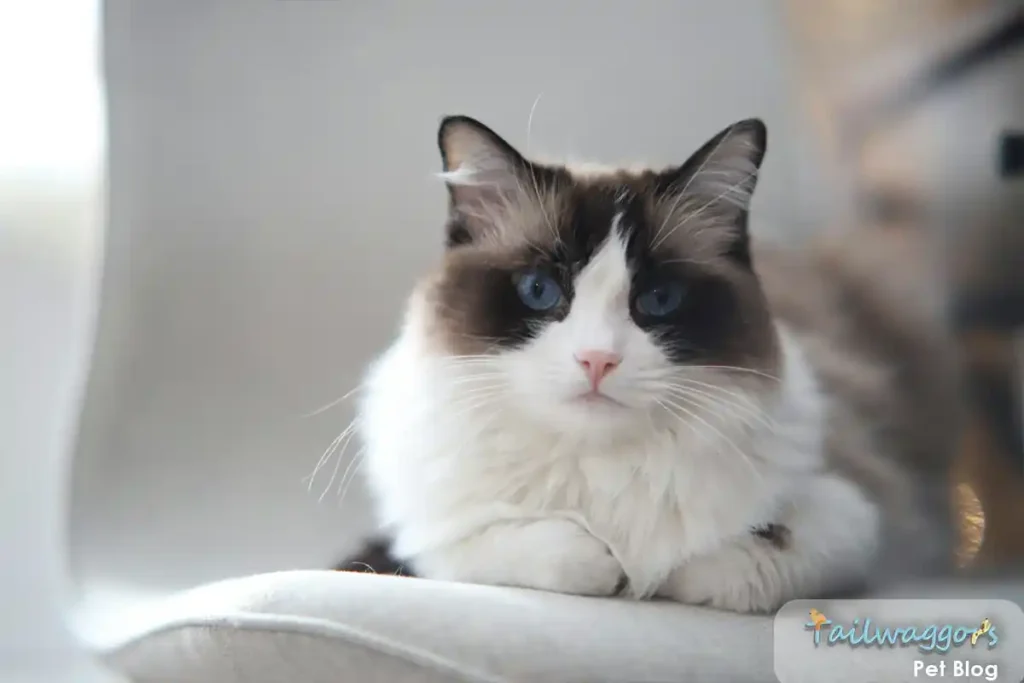
Caring for a Ragdoll Cat: Grooming, Diet, and Maintenance Guide
Table: Care Requirements for Ragdolls
| Care Aspect | Requirement Level | Frequency | Detail | Importance Rating |
|---|---|---|---|---|
| Grooming | Moderate | 2–3 times per week | Brush silky coat, trim nails | ⭐⭐⭐⭐⭐ |
| Feeding | High | Daily | High-protein diet, portion control | ⭐⭐⭐⭐⭐ |
| Exercise | Moderate | Twice daily | Interactive play, climbing structures | ⭐⭐⭐⭐ |
| Mental Stimulation | High | Continuous | Puzzle feeders, training sessions | ⭐⭐⭐⭐⭐ |
| Environment | High | Continuous | Soft bedding, stress-free zones | ⭐⭐⭐⭐⭐ |
Grooming: Keeping Their Silky Coat Beautiful
The Ragdoll’s semi-long, silky coat requires moderate maintenance to remain tangle-free and healthy. Regular grooming also minimizes shedding and helps prevent hairballs.
- Brushing: Use a wide-tooth comb or soft-bristle brush 2–3 times a week. During seasonal shedding periods (spring and fall), increase to daily brushing to manage loose fur effectively.
- Ear Cleaning: Check ears monthly for wax buildup or debris. Use a vet-approved cleaner for gentle maintenance.
- Dental Hygiene: Brush their teeth weekly with cat-safe toothpaste to prevent plaque buildup and gum disease. Dental treats can supplement brushing for improved oral health.
🐾 Tailwaggors Tip:
Start grooming routines when your Ragdoll is a kitten to establish trust and make grooming a stress-free experience. We have a whole guide dedicated to Ragdoll grooming.
Diet and Nutrition: Supporting Health and Longevity
Ragdolls’ relaxed temperament makes them prone to weight gain, so a carefully controlled diet with high-quality ingredients is crucial for their overall well-being.
- High-Protein Diet: Choose a diet rich in animal-based proteins to support their muscle mass and energy needs.
- Portion Control: Consult your veterinarian to determine the right portion sizes based on your Ragdoll’s age, weight, and activity level. Overfeeding should be avoided to prevent obesity.
- Wet vs. Dry Food: A mix of wet and dry food ensures hydration and supports dental health.
- Hydration: Encourage water intake with a cat fountain to promote kidney health and prevent urinary issues, which Ragdolls may be prone to.
Balanced nutrition tailored to your Ragdoll’s unique needs can significantly reduce the risk of obesity and associated health issues,” says Dr. Esther Knoetze, BSc, BVSc.
Exercise and Enrichment: Keeping Them Physically and Mentally Healthy
Though laid-back, Ragdolls benefit greatly from regular exercise and mental stimulation to prevent boredom and maintain a healthy weight.
- Interactive Play: Dedicate 10–15 minutes twice daily for activities like chasing feather wands or laser pointers.
- Climbing and Scratching: Provide scratching posts and cat trees to satisfy their natural instincts and encourage light physical activity.
- Puzzle Feeders: Combine meal times with mental stimulation by using treat-dispensing toys or hiding treats around the house.
Mental Stimulation: Engaging Their Intelligence
Ragdolls are highly intelligent cats that thrive on mental enrichment. Without adequate stimulation, they may become bored and develop undesirable behaviors.
Enrichment Ideas:
- Training Sessions: Use positive reinforcement to teach your Ragdoll commands like “sit” or “high-five.” These sessions provide mental stimulation and strengthen the bond with their humans.
- Rotating Toys: Keep your Ragdoll engaged by rotating their toys weekly to maintain interest and curiosity.
- Interactive Games: Hide treats in puzzle feeders or under objects to encourage problem-solving and hunting instincts.
Pro Tip: Create an engaging environment with climbing structures, window perches, and interactive toys to provide continuous enrichment for your Ragdoll.
Creating a Comfortable Environment
Ragdolls are sensitive and thrive in calm, predictable settings. Here’s how to create a stress-free space that meets their needs:
- Cozy Beds and Blankets: Place soft bedding in low-traffic areas where your Ragdoll can relax undisturbed.
- Safe Retreats: Provide quiet retreats, such as cat caves or enclosed spaces, to help them feel secure during loud events or when introducing new pets.
- Temperature Regulation: Ensure access to cool spaces during warm weather and cozy spots during colder months to keep your Ragdoll comfortable year-round.
🐾 Tailwaggors Tip:
Check out our Vet-Approved New Cat Supply Checklist for expert recommendations on bedding, toys, and more.
Why Proper Care Matters
Ragdoll cats are known for their gentle, affectionate nature and thrive in environments that cater to their unique needs. By focusing on proper nutrition, grooming, and interactive play, you can ensure your Ragdoll remains healthy, happy, and deeply bonded with you. Their laid-back demeanor makes them excellent companions, but they rely on attentive care to maintain their well-being and charm.
🐾 Tailwaggors Tip:
Engage your Ragdoll cat with daily brushing to keep their silky coat tangle-free and stimulate bonding. Incorporate interactive toys like feather wands to satisfy their playful instincts. Your care and attention will nurture their loyalty, rewarding you with a lifetime of affection and their serene companionship.
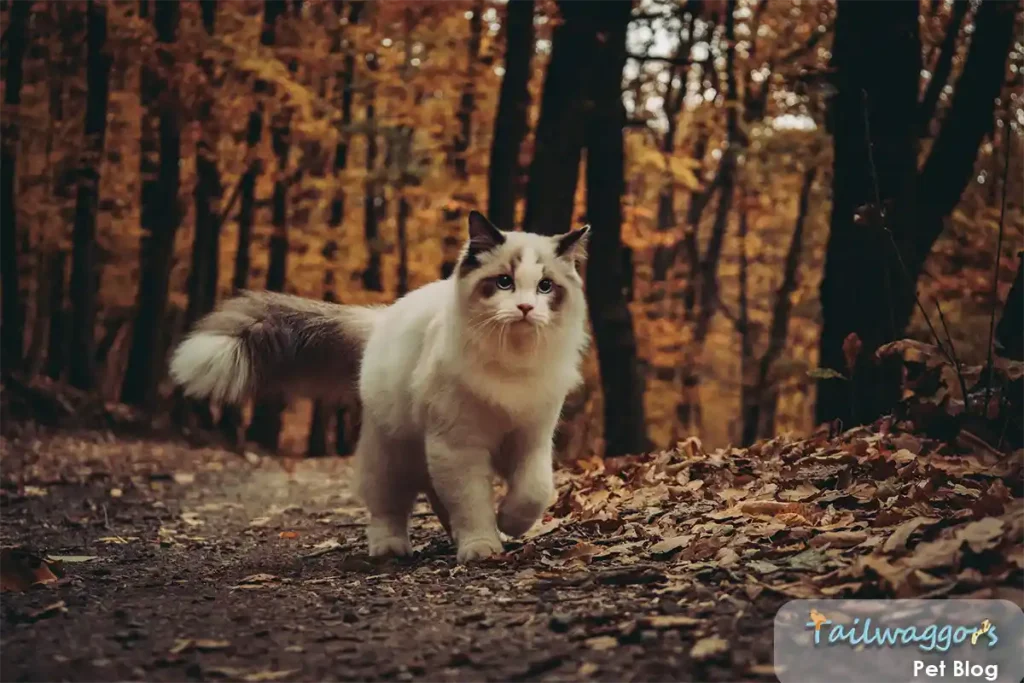
Owning a Ragdoll Cat: Budgeting and Financial Insights
Bringing a Ragdoll cat into your home is a delightful experience. However, understanding the financial responsibilities involved is crucial to ensure your Ragdoll thrives. This guide provides a detailed breakdown of initial costs, annual expenses, and strategies for managing your budget effectively.
Table: Cost Breakdown Analysis for Ragdolls
| Expense Category | Initial Cost (USD) | Annual Cost (USD) | Value Rating |
|---|---|---|---|
| Adoption or Breeder Fees | $75–$2,500 | N/A | ⭐⭐⭐⭐ |
| Food and Treats | N/A | $600–$1,200 | ⭐⭐⭐⭐⭐ |
| Litter and Maintenance | $30–$100 | $180–$360 | ⭐⭐⭐⭐ |
| Veterinary Care | $150–$500 | $300–$600 | ⭐⭐⭐⭐⭐ |
| Grooming Supplies | $20–$100 | $50–$100 | ⭐⭐⭐⭐ |
| Pet Insurance | N/A | $240–$720 | ⭐⭐⭐⭐ |
| Toys and Enrichment | $50–$150 | $50–$150 | ⭐⭐⭐ |
| Emergency Care | $200–$5,000 (varies) | N/A | ⭐⭐⭐⭐ |
Initial Costs: Preparing for Your Ragdoll
Adoption vs. Breeder Fees
- Adoption Fees: $75–$400
Adoption often includes vaccinations, spaying/neutering, and microchipping, making it a cost-effective option. - Breeder Fees: $1,500–$2,500
Purchasing from a reputable breeder ensures health guarantees and genetic testing. Unique patterns like Flame Point or Lilac may cost more.
Essential Supplies for Day One
Prepare your home with the following essentials:
| Item | Cost Range (USD) |
|---|---|
| Litter Box | $30–$100 |
| Cat Litter (per bag) | $15–$25 |
| Food and Water Bowls | $15–$30 |
| Scratching Posts | $20–$100 |
| Cat Bed | $20–$150 |
| Toys | $15–$50 |
| Grooming Tools | $20–$50 |
| Total Setup Cost | $150–$500 |
Ongoing Annual Costs
Food and Treats
Ragdolls are a larger breed and may consume more food than smaller cats. High-quality nutrition is essential for maintaining their health and energy.
| Food Type | Cost Range (Annually) |
|---|---|
| Dry Food | $360–$720 |
| Wet Food (Optional) | $300–$600 |
| Specialty Diets | $500–$1,000 |
🐾 Tailwaggors Tip:
A mix of wet and dry food supports hydration and dental health.
Veterinary Care
Routine vet visits are vital to monitoring your Ragdoll’s health and addressing breed-specific risks like Hypertrophic Cardiomyopathy (HCM).
| Category | Cost Range (Annually) |
|---|---|
| Wellness Exams | $100–$200 |
| Vaccinations | $50–$100 |
| Flea, Tick, and Worm Prevention | $60–$150 |
| Dental Cleanings | $300–$500 (every 1–2 years) |
Preventive care is key for minimizing emergency vet costs and managing hereditary conditions,” says Dr. Esther Knoetze, BSc, BVSc.
Grooming Expenses
Ragdolls’ silky, semi-long coats require regular grooming to stay healthy and tangle-free.
| Type | Cost Range |
|---|---|
| At-Home Grooming Supplies | $50–$100 annually |
| Professional Grooming | $50–$100 per session |
Pro Tip: Increase brushing during shedding seasons to reduce hairballs and matting.
Hidden and Emergency Costs
Planning for unexpected expenses ensures your Ragdoll receives the care they need.
- Emergency Vet Visits: $200–$5,000 for diagnostics or surgeries.
- Prescription Diets: $400–$1,000 annually for urinary health or weight management.
- Pet Boarding or Sitting: $25–$50 per day during travel.
🐾 Tailwaggors Tip:
Invest in pet insurance covering hereditary conditions like HCM to offset emergency costs.
Cost-Saving Strategies for Owners
- Buy in Bulk: Stocking up on litter and food during sales reduces recurring expenses.
- Preventive Healthcare: Regular checkups catch health issues early, saving on costly treatments.
- Durable Supplies: Invest in high-quality scratching posts and beds that last years.
- DIY Grooming: Learn basic grooming techniques to save on professional services.
Is Owning a Ragdoll Cat Worth the Investment?
Owning a Ragdoll cat is a financial commitment, but their loving nature and gentle temperament make it worthwhile. By budgeting wisely and planning for both routine and unexpected expenses, you can ensure your Ragdoll thrives.
For more ownership tips and expert advice, explore our:
Disclaimer:
The cost estimates provided in the “Ragdoll Cat: Budgeting and Financial Insights” section are general approximations based on current market trends and commonly reported expenses in the United States. Actual costs may vary depending on factors such as location, individual pet needs, specific health conditions, and lifestyle choices.
These estimates are intended for informational purposes only and should not replace personal research or consultations with veterinary or pet care professionals. We recommend setting aside additional funds for unexpected expenses, including emergency veterinary care and specialized dietary or training needs, to ensure your Alaskan Malamute receives the best possible care.
Always consult with a veterinarian or trusted breeder for detailed guidance tailored to your specific situation. Tailwaggors is not responsible for discrepancies or unforeseen costs that may arise.
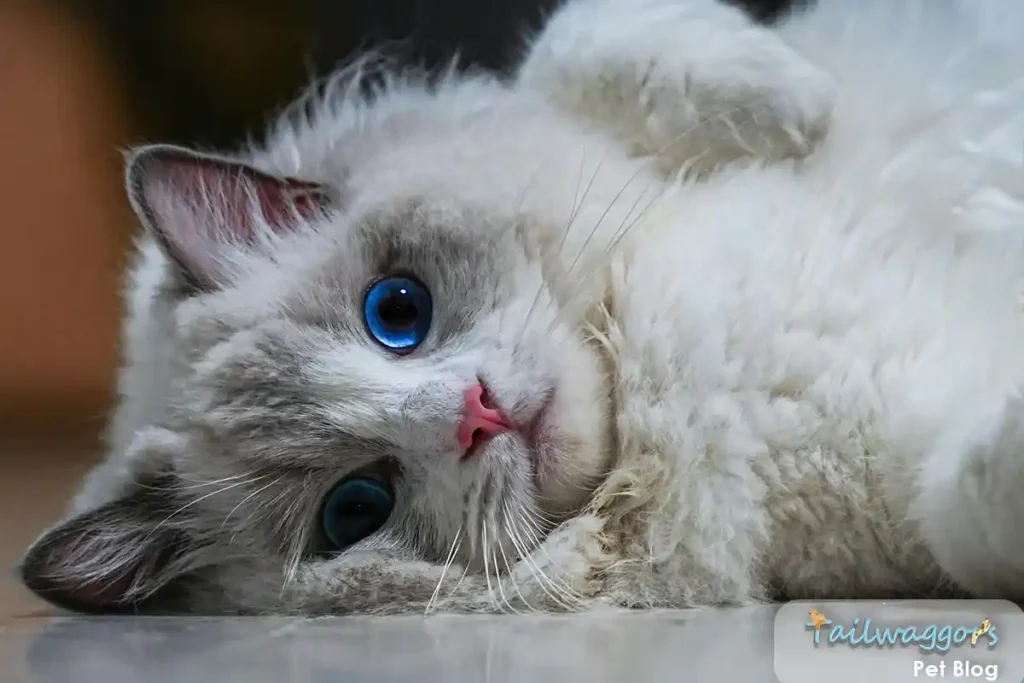
Breed Comparison: Ragdoll vs. Other Popular Breeds
When considering adding a Ragdoll to your family, it’s essential to compare them with other popular breeds that share similar traits. While Ragdolls are celebrated for their affectionate and laid-back nature, other breeds like Maine Coons, Persians, and Siamese have unique characteristics that might suit different preferences and lifestyles. Below, we break down the key differences to help you make an informed decision.
Table: Breed Comparison
| Aspect | Ragdoll | Maine Coon | Persian | Siamese |
| Size | Large (10–20 lbs) | Large (13–18 lbs) | Medium (7–12 lbs) | Medium (6–14 lbs) |
| Coat | Silky, low maintenance | Shaggy, water-resistant | Dense, long, high maintenance | Short, sleek, minimal upkeep |
| Personality | Laid-back, affectionate | Playful, friendly | Calm, reserved | Vocal, high-energy |
| Grooming Needs | Low to moderate | Moderate to high | Very high | Low |
| Energy Level | Low to moderate | High | Low | High |
| Affection Level | Very high | High | High | Very high |
| Compatibility with Pets | Excellent | Excellent | Good | Moderate |
Ragdoll vs. Maine Coon
The Maine Coon, often called the “gentle giant” of the cat world, shares some similarities with the Ragdoll but differs in key aspects like energy levels and grooming requirements.
Key Differences:
- Size: Both breeds are large, but Maine Coons tend to be more muscular and athletic, with males weighing 13–18 lbs or more. Ragdolls, while still large, are more relaxed and less active.
- Coat: Ragdolls have silky, semi-long fur that is low maintenance, requiring brushing just 1–2 times per week. Maine Coons, with their shaggier, water-resistant coats, need more frequent grooming to prevent tangles.
- Temperament: Ragdolls are famous for their “floppy” behavior when held, making them the ultimate lap cats. Maine Coons, though affectionate, are more independent and curious, often exploring their surroundings.
Pro Tip: If you’re seeking a playful and adventurous companion, the Maine Coon might be a better fit, while Ragdolls excel as laid-back, affectionate pets.
Ragdoll vs. Persian
Persians are renowned for their luxurious appearance and calm demeanor, but their care requirements differ significantly from those of Ragdolls.
Key Differences:
- Size: Ragdolls are noticeably larger, with males reaching up to 20 lbs, while Persians average 7–12 lbs.
- Coat: Persians have dense, long fur that requires daily grooming to prevent mats and tangles. Ragdolls, by comparison, have silky coats that are less prone to matting and need brushing only 1–2 times per week.
- Temperament: Both breeds are affectionate, but Ragdolls are more interactive and enjoy socializing, while Persians are more reserved and prefer lounging.
- Activity Level: Ragdolls are moderately playful but generally relaxed, whereas Persians are low-energy cats that are content with minimal activity.
Pro Tip: Persians are ideal for those who appreciate a calm, regal presence and are willing to invest in daily grooming. Ragdolls, with their lower grooming needs and social nature, suit families or owners looking for a more interactive companion.
Ragdoll vs. Siamese
The Siamese is known for its striking appearance and vocal personality, presenting a stark contrast to the quieter, laid-back Ragdoll.
Key Differences:
- Size: Ragdolls are larger and softer in appearance, while Siamese cats are sleek and slender, typically weighing 6–14 lbs.
- Coat: Siamese cats have short, low-maintenance coats, whereas Ragdolls’ semi-long fur requires light grooming.
- Temperament: Siamese are highly vocal, attention-seeking, and energetic, often demanding constant interaction. Ragdolls, on the other hand, are quieter, more laid-back, and less demanding.
- Energy Level: Siamese cats are high-energy and thrive on active play, while Ragdolls enjoy bursts of playfulness followed by long periods of relaxation.
Pro Tip: Siamese cats are ideal for owners who enjoy an active and interactive pet, while Ragdolls offer a more balanced blend of affection and tranquility.
Why Ragdolls Stand Out
Ragdolls are often described as the ultimate companion cat due to their affectionate nature, adaptability, and moderate care needs. They thrive in various living environments, get along well with children and other pets, and require relatively low grooming compared to other long-haired breeds.
Whether you’re looking for a laid-back lap cat, a family-friendly pet, or a feline that integrates seamlessly with other animals, Ragdolls deliver unmatched warmth and loyalty.
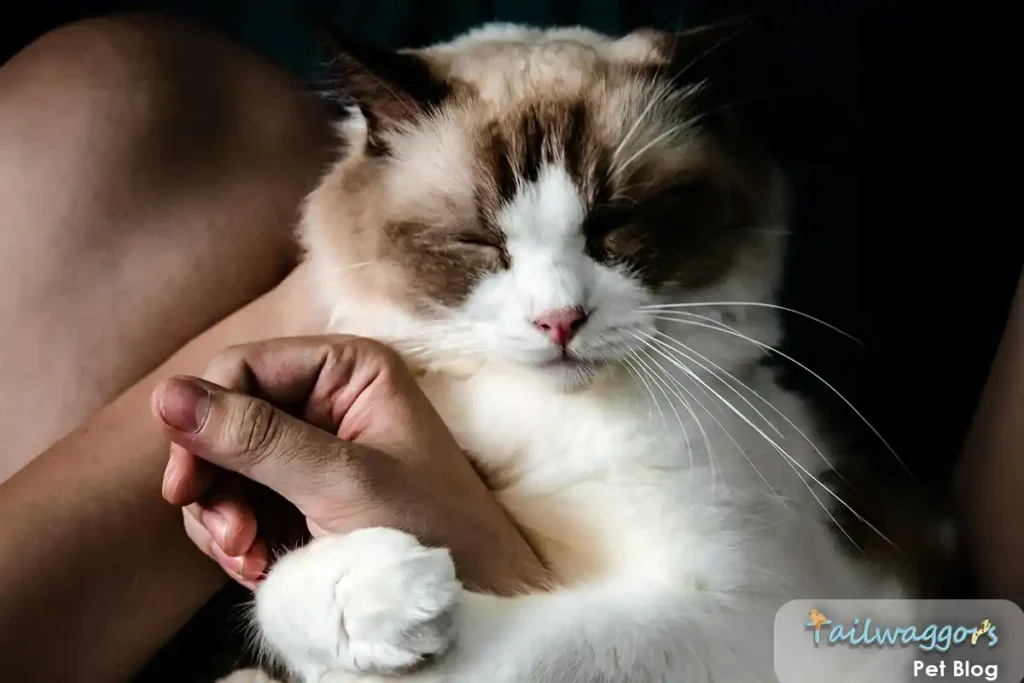
Frequently Asked Questions about Ragdoll Cats
In this section, we answer some of the most commonly asked questions about Ragdolls, covering everything from their personality traits to care needs and health considerations. Whether you’re a first-time cat owner or a seasoned pet parent, these insights will help you better understand this remarkable breed.
Are Ragdolls Hypoallergenic?
+Ragdolls are not hypoallergenic, as they produce allergens in their saliva and dander. However, they tend to shed less dander compared to other long-haired breeds, which may make them more tolerable for individuals with mild allergies.
🐾 Pro Tip:
Regular grooming and frequent cleaning of your home can help reduce allergens. Consider using HEPA air purifiers in main living areas.
How Much Do Ragdolls Weigh?
+Ragdolls are a large breed with distinct weight ranges:
- Males: 15–20 lbs (6.8–9.1 kg)
- Females: 10–15 lbs (4.5–6.8 kg)
Their size, combined with their calm and gentle nature, makes them an appealing choice for many cat lovers.
How Long Do Ragdolls Live?
+With proper care, Ragdolls have an average lifespan of 12–15 years, though some live into their late teens or even early twenties.
🩺 Veterinary Insight:
Regular veterinary checkups, a balanced diet, and a stress-free environment significantly contribute to their longevity.
Are Ragdolls Good with Children and Pets?
+Yes! Ragdolls are known for their gentle, tolerant nature, making them ideal companions for children and other pets. They are patient with handling and enjoy the company of both humans and animals.
📝 Real-Life Example:
Many Ragdoll owners report their cats happily playing with dogs or lying peacefully alongside other cats, showcasing their adaptability and calm demeanor.
Do Ragdolls Require a Lot of Grooming?
+Ragdolls have silky, semi-long fur that is relatively low maintenance compared to other long-haired breeds. They require brushing 1–2 times a week to prevent tangles and reduce shedding.
🐾 Pro Tip:
Increase grooming frequency during shedding seasons (spring and fall) to minimize hairballs.
Are Ragdolls Active Cats?
+Ragdolls have a moderate energy level. While they enjoy bursts of play, such as chasing feather toys or engaging with puzzle feeders, they also appreciate long periods of relaxation and cuddling.
Are Ragdolls Vocal?
+Ragdolls are known for their soft, sweet meows and gentle trills. Unlike more vocal breeds like Siamese, Ragdolls communicate subtly, making them suitable for quieter homes.
💡 Fun Fact:
Many Ragdolls “talk back” to their owners in response to greetings or commands, creating a uniquely interactive bond.
What Are Common Health Issues in Ragdolls?
+Like all breeds, Ragdolls are prone to specific health conditions:
- Hypertrophic Cardiomyopathy (HCM): A genetic heart condition. Regular screenings can help with early detection.
- Urinary Issues: Ragdolls may be prone to urinary crystals or infections, so proper hydration and regular vet visits are essential.
- Obesity: Their laid-back nature can lead to weight gain without proper portion control and exercise.
🐾 Pro Tip:
Genetic testing and preventive care can help minimize the risk of hereditary conditions.
Do Ragdolls Need Special Food?
+While Ragdolls don’t require a breed-specific diet, they benefit from high-quality cat food formulated for large breeds. Due to their size and potential for heart issues, a diet with appropriate protein levels and taurine is important.
🩺 Veterinary Insight:
Consider wet food or a combination diet to ensure proper hydration, which is especially important for preventing urinary issues common in the breed.
Can Ragdolls Be Left Alone?
+Ragdolls are social cats that form strong bonds with their families. While they can tolerate being alone for moderate periods, they do best with regular companionship. Extended periods of solitude may lead to anxiety or depression.
🐾 Pro Tip:
If you work long hours, consider getting two Ragdolls or providing interactive toys and cat trees to keep them entertained.
Ragdolls: The Ideal Companion
Ragdolls are a breed that combines beauty, intelligence, and a loving temperament. Their gentle nature and moderate care needs make them an excellent choice for families, singles, and multi-pet households alike.
For emergency situations or keeping your home cat-friendly, explore these must-read guides:
- CBD Oil: Unlocking Serenity or Not?
- Prevent Cat Poisonings: Essential Tips and Emergency Advice for Pet Owners
🐾 Tailwaggors Tip:
If you’re looking for a friendly and affectionate cat that loves companionship and a relaxed environment, the Ragdoll is an excellent choice. With gentle handling, regular interactive play, and plenty of love, your Ragdoll will reward you with loyalty and endless cuddles.
Conclusion: Wrapping the Ultimate Guide to the Ragdoll Cat
Ragdolls are an extraordinary breed, offering a perfect combination of beauty, affection, and intelligence. Their calm demeanor and social nature make them a standout choice for individuals, families, and even multi-pet households. From their striking blue eyes and luxurious coats to their gentle and floppy behavior, Ragdolls quickly earn a place in the hearts of their owners.
Why Ragdolls Are the Perfect Companion Cat
- Affectionate and Adaptable: Ragdolls form deep bonds with their families and adjust well to different living environments.
- Moderate Care Needs: While they require regular brushing and quality food, their needs are manageable compared to other long-haired breeds.
- Great for Families: Their gentle, patient nature makes them excellent companions for children and other pets.
Providing the Best Care for Your Ragdoll Cat
To ensure your Ragdoll lives a happy and healthy life, focus on these key areas of care:
- Grooming: Brush your Ragdoll’s silky coat two to three times a week to prevent matting and reduce shedding. Pay attention to their ears, cleaning them gently to prevent infections.
- Nutrition: Offer a high-quality, protein-rich diet tailored to their activity level and size to support their muscular build and maintain a healthy weight.
- Exercise and Enrichment: Provide daily interactive play sessions using toys like feather wands or laser pointers to stimulate their natural curiosity and prevent boredom.
- Veterinary Care: Schedule regular health check-ups, dental cleanings, and screenings for common concerns like hypertrophic cardiomyopathy (HCM) and obesity.
By meeting these needs, your Ragdoll will thrive as a loving and affectionate companion.
Thinking About Adopting a Ragdoll Cat?
If you’re considering adding a Ragdoll Cat to your family, remember that this breed is a long-term commitment with costs and care needs to match. From initial expenses to ongoing enrichment and health maintenance, planning ahead ensures a seamless experience for both you and your new feline friend.
Want to learn more about preparing for your cat? Check out these resources:
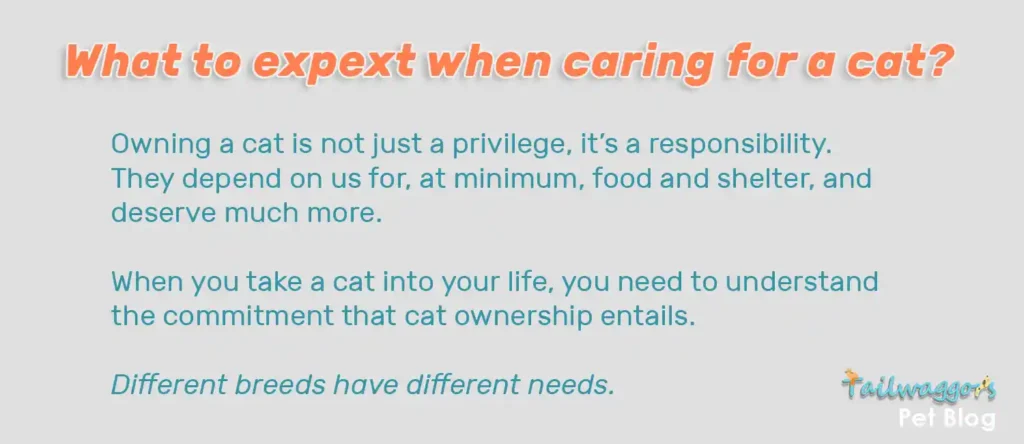
Share Your Ragdoll Story!
Have a Ragdoll in your life? We’d love to hear about your experiences! Share your stories, tips, and photos in the comments below or tag us on social media. Don’t forget to follow us for more updates, expert advice, and adorable cat content. Contact Tailwaggors.
Meet the Abyssinian cat—an Egyptian-inspired beauty with a heart full of charm!
🐾✨ Explore their personality, health tips, costs, and more in this must-read guide.
Share with your fellow cat lovers and hear what they say 🐱❤️






